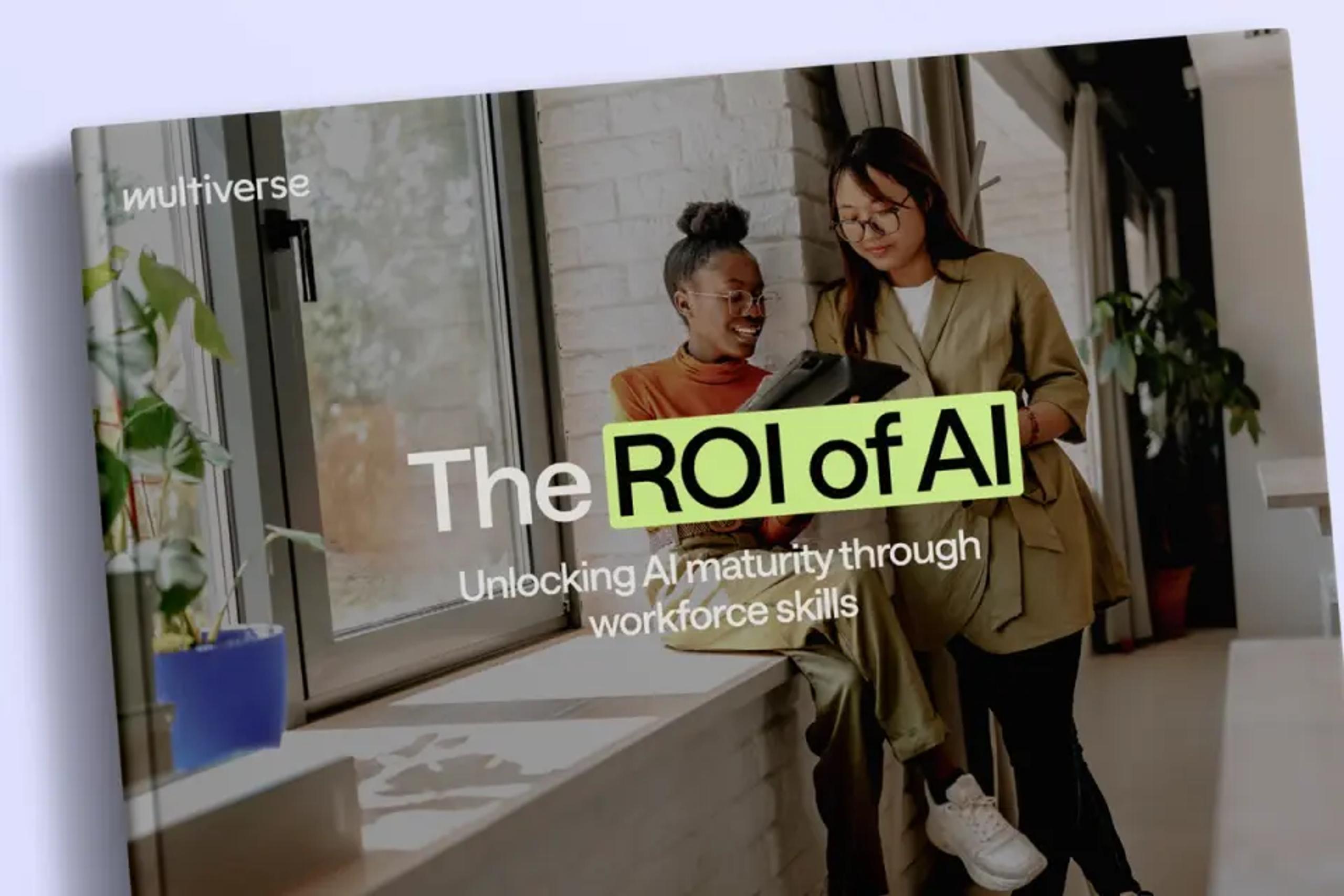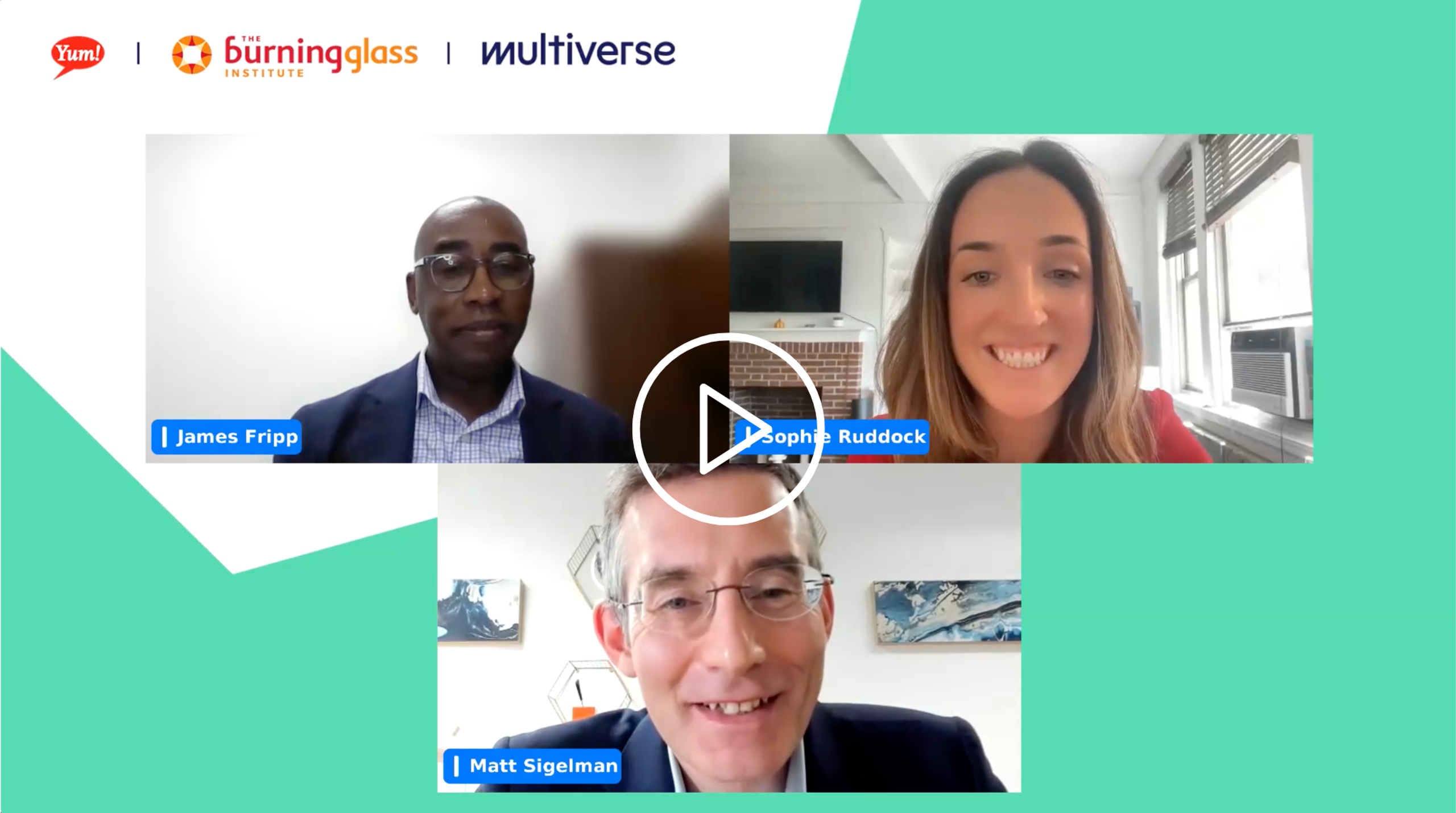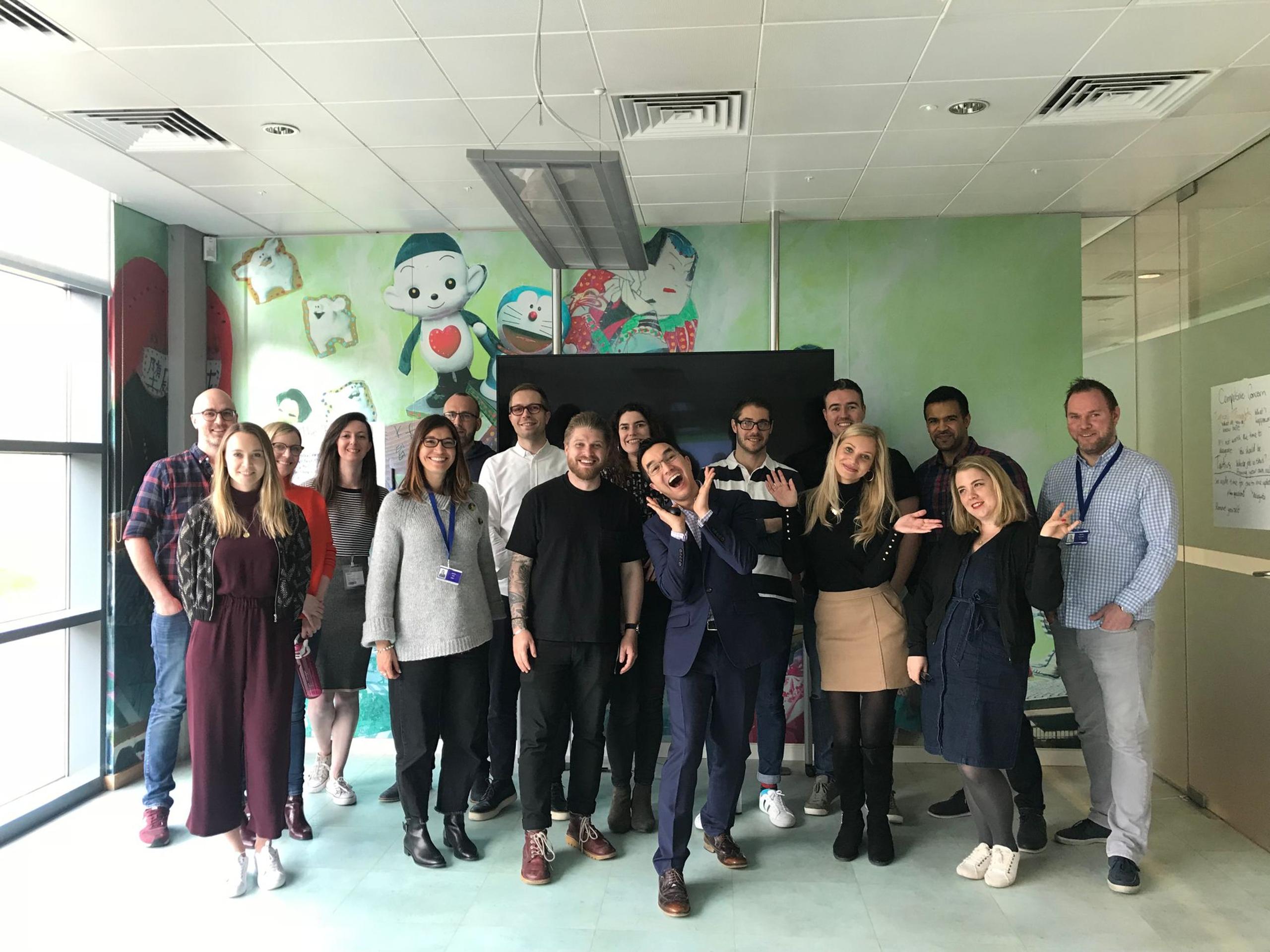Yum! Brand’s Chief Equity, Inclusion and Belonging Officer, James Fripp and Burning Glass Institute’s President, Matt Sigelman share their insights on the power of reskilling to train and retain high potential talent.
The global workforce is constantly evolving to adapt to the changing needs of the world. Change is happening so fast that McKinsey research(opens new window) estimates that up to 375 million workers may need to switch occupational categories and learn new skills by 2030.
It’s no wonder why reskilling (when an individual learns new skills that are needed to move into a completely different role at their existing employer) has become a major topic of conversation among business leaders.
We invited Yum! Brands’ Chief Equity, Inclusion and Belonging Officer, James Fripp(opens new window), and the Burning Glass Institute’s (BGI) President, Matt Sigelman(opens new window), to discuss reskilling’s rise as a solution to today’s workforce challenges, and share their perspective on reskilling programs.
Why should companies prioritize reskilling?
The Burning Glass Institute(opens new window) (BGI) advances data-driven research and practice for the future of work. Reskilling is a major focus for the BGI and one that Matt believes should be a priority for companies. Here are some key benefits reskilling has to offer.
Addressing the talent shortage
The U.S. Chamber of Commerce found(opens new window) that there are 1.9 million fewer Americans working today compared to February 2020. There are several factors contributing to the supply scarcity, including early retirement, low migration, lack of childcare access, and digital disruption. This trend has also disproportionately impacted those from Black, Latinx and Asian backgrounds(opens new window), who experienced a disproportionate number of job losses during the first half of 2020.
As Matt shared, “We know that, increasingly, a lot of the kinds of talent that's most valuable is also hardest to train and the most scarce. So those kinds of shortages that we've been experiencing aren't necessarily going to go away. We've all seen that in that kind of environment, relying on talent acquisition as the sole means of filling jobs is really ineffective and inefficient.”
And yet, Harvard Business Review found(opens new window) that only 28% of talent acquisition leaders consider internal candidates as an important source to fill vacancies. Companies are not only underutilizing existing assets, but they’re missing out on a pool of high-potential candidates.
Building an equitable workforce by growing opportunity
Despite the fact that Black and Hispanic/Latinx individuals make up 12% and 17% of the US workforce respectively, they represent only 8% of US tech occupations(opens new window). This disparity is not due to a lack of available talent, but rather a lack of equal opportunity.
Matt encourages businesses to not view talent as a finite resource. He explained, “Increasingly employers are realizing that they need to think about building a more equitable workforce as something more than a zero sum game. Not thinking ‘there’s a finite amount of talent and all we can do is fight for it’, but instead ‘we can grow the pie by growing opportunity and building it’.”
Improving employee satisfaction and retention
Reskilling efforts are also crucial in boosting employee satisfaction and retention. While some experts believe ‘The Great Resignation’ is over, four million people (opens new window)quit their jobs in 2023 – which is nearly a million more than in November 2020. Workers are more willing to change their employer to improve their earning potential and wellbeing. The Burning Glass Institute’s American Opportunity Index(opens new window) found that the difference between working at a company that invests in their employees’ progression and development and one that does not, is worth more than a million dollars over the course of a 30-year career.
As James called out, “...we can’t underestimate the importance of reskilling, especially when we’re talking about those who may come from underrepresented communities… that from the start they feel heard, valued, understood, and most importantly, that they belong. That’s the beginning of a successful apprenticeship which turns into a long term retention and engagement strategy.”
Building a successful reskilling program
Making your program a success is the next piece of the puzzle. Here are some key actions Matt and James recommend to ensure effectiveness of your reskilling efforts.
Plan for the long-term
A great start is not enough to ensure success. McKinsey found(opens new window) that 70% of data transformation efforts fall short of expectations. This is often the case when leaders lack clarity on the goals of their programs and fail to consider long-term strategies.
Matt believes businesses should approach Learning and Development as Research and Development, adding:“Part of that thinking is the notion that we’re treating it as an investment. I think there’s a lot of organizations out there with really good intentions, but they get to the point where they need the talent and think ‘I wish I could hire from within, but I don’t have anybody ready right now.’ [...] And Yum! is being really smart thinking ‘What’s the talent, not just that we need, but that we’regoing toneed and how do we start planning for that ahead of time?’ Because that’s key to making this work.”
Get the whole organization on board
Transparency is key – when the whole company knows what you’re doing and why you’re doing it, there is greater alignment across teams and more buy-in into these initiatives. This of course starts with senior leadership believing in the mission and impact it can make for the company.
James explains how Yum! Brands approaches this challenge: “We not only need to focus on making sure that we have the individuals in the program, but do their coaches and the team they’re working on understand how to support these folks? Because if there’s no support for them, then it’ll be just that – a program. What we want it to become is a true strategy that helps you build your business for the foreseeable future, not just for a moment in time.”
Matt adds: “Make sure that workers themselves can see both that potential in themselves and that they can realize that potential inside the company. Organizations that are the best at promoting mobility, are the organizations that signpost that for their workers.[...] Too often the right programs are in place but when you ask workers what programs there are, they don’t even know.”
Keen to get more insights?
Check out the on-demand webinar where we cover even more questions and insights on reskilling. Watch now.
Make your reskilling program successful with Multiverse
We help businesses solve critical problems through reskilling, being an active partner every step of the way. Get in touch to chat to our team.









